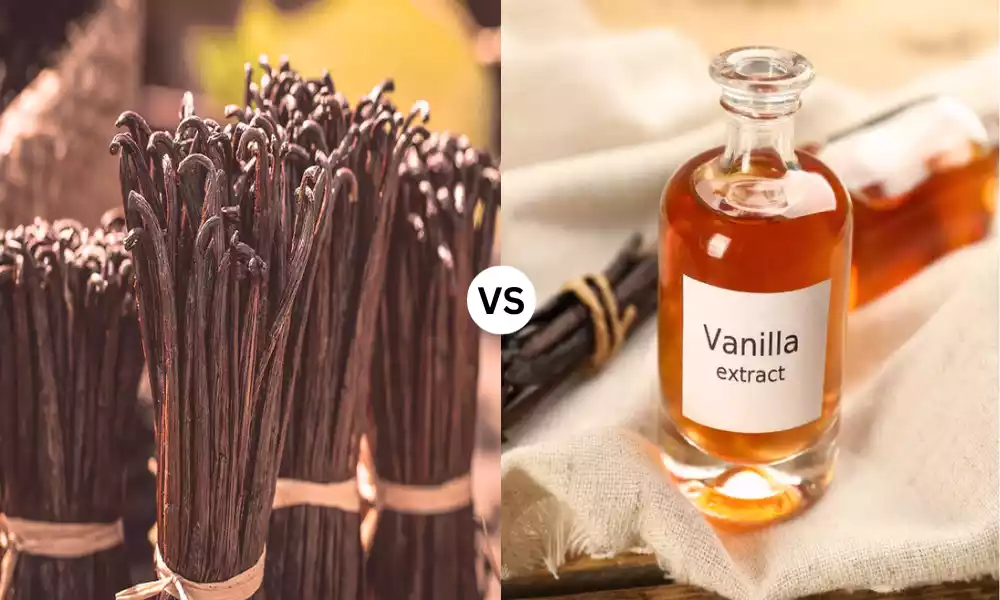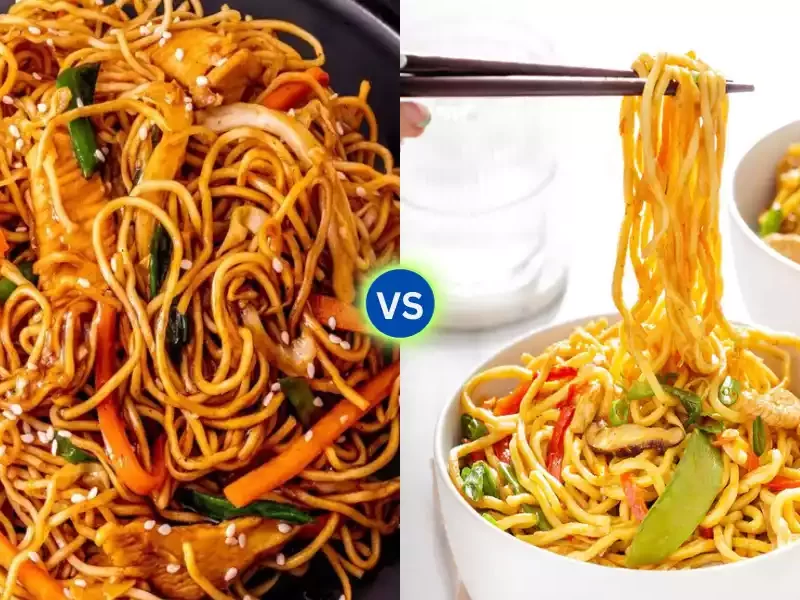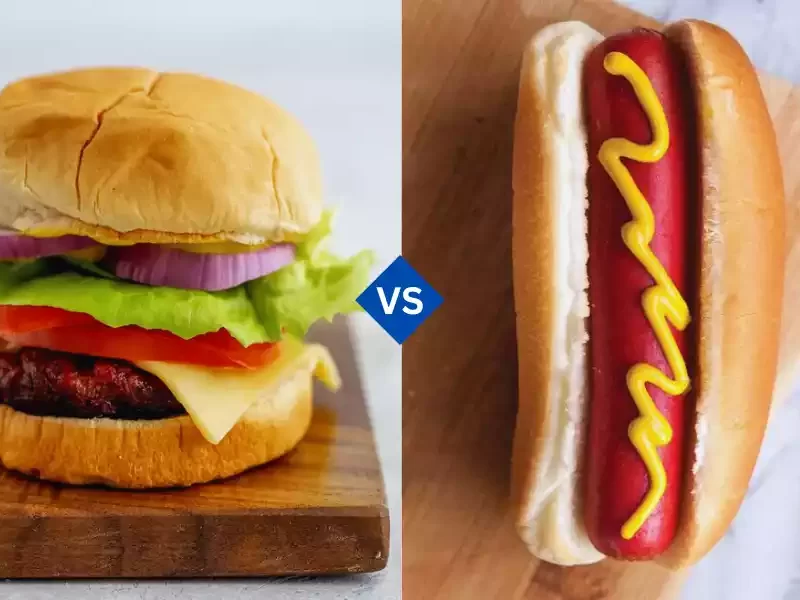Vanilla and Vanilla Extract: Vanilla, derived from the pods of the vanilla orchid, is a climbing plant native to Mexico but now grown in various tropical locations around the world. Revered for its delightful aroma and flavor, vanilla is a primary ingredient in a vast array of culinary and confectionery creations. Vanilla extract, on the other hand, is a solution containing the flavor compound vanillin, extracted from vanilla beans. This liquid is commonly used in baking and cooking to impart the classic, rich vanilla flavor. While there are synthetic versions available, the best vanilla extracts are made by steeping the beans in alcohol and water over an extended period.
History of Vanilla and Vanilla Extract
Originating from ancient Mesoamerica, vanilla was once exclusive to indigenous cultures, with the Totonac people of present-day Mexico being its earliest cultivators. The Aztecs later acquired vanilla, using it to flavor their cacao-based drink, xocolatl. The Spanish explorer Hernán Cortés introduced vanilla to Europe in the 16th century, where it gained rapid popularity.
Vanilla’s propagation outside its native habitat faced challenges due to its specialized pollination needs. It wasn’t until the mid-19th century, with the discovery of hand-pollination, that vanilla cultivation expanded globally. Concurrently, vanilla extract emerged as a convenient method to impart vanilla’s flavor, achieved by steeping vanilla beans in alcohol. This innovation further cemented vanilla’s global culinary significance.
What is Vanilla?
Vanilla is a flavor derived from the orchids of the genus “Vanilla,” primarily from the species Vanilla planifolia. It manifests as long, thin pods commonly referred to as vanilla beans. These beans contain numerous tiny seeds and a fragrant, viscous substance. Native to Mesoamerica, vanilla has been cultivated and used for centuries, initially by the Totonac people and later by the Aztecs.
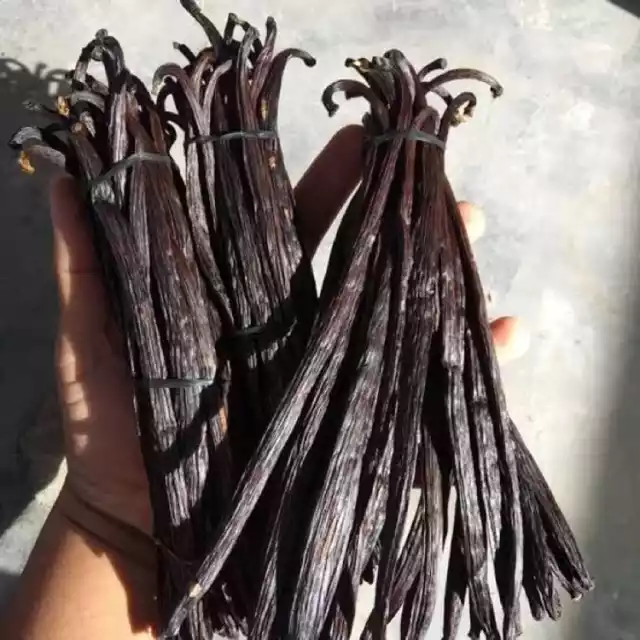
The flavor of vanilla is sweet, rich, and complex, making it a favorite in many culinary applications worldwide, from baked goods to beverages. Its production is labor-intensive, as the vanilla orchid flowers are often hand-pollinated, and the beans require meticulous curing to develop their characteristic flavor and aroma.
Types of Vanilla
Vanilla is a complex flavor that comes from different species of vanilla orchids and from various regions, each with its own unique characteristics. Here are the primary types of vanilla based on species and their most common regional sources:
- Bourbon or Madagascar Vanilla (Vanilla planifolia):
- Originates from Madagascar, the Comoros, and Réunion Island (formerly Île Bourbon, hence the name “Bourbon” vanilla).
- This is the most common type and contributes to about 70-80% of the world’s vanilla production.
- Has a rich, sweet, and creamy flavor profile.
- Mexican Vanilla (Vanilla planifolia):
- As the name suggests, it’s native to Mexico.
- Similar to Bourbon vanilla but with a more robust, nuanced flavor often described as spicier or woodier.
- Tahitian Vanilla (Vanilla tahitensis):
- Originates from French Polynesia.
- Distinct from Vanilla planifolia; it’s a different species.
- Known for its floral, fruity, and sometimes anise-like character.
- Pods are often fatter and contain fewer seeds than other types.
- Indian Vanilla (Vanilla planifolia):
- Grown in India.
- Has a more robust and intense flavor compared to Bourbon vanilla.
- Indonesian Vanilla (Vanilla planifolia):
- Indonesia is the second-largest producer of vanilla after Madagascar.
- Often has a smoky or woody flavor profile.
- Ugandan Vanilla (Vanilla planifolia):
- Has a strong chocolate character, making it favored for chocolate products.
- Tongan Vanilla (Vanilla planifolia & Vanilla tahitensis):
- Comes from the Kingdom of Tonga.
- Known for its unique rich and fruity profile.
Each type has its own unique flavor profile due to variations in soil, climate, and processing methods, making vanilla a versatile and globally cherished ingredient. When purchasing vanilla, it’s essential to consider the desired flavor profile for the dish or product you’re creating.
What is Vanilla Extract?
Vanilla extract is a solution made by macerating and steeping vanilla beans in a mixture of alcohol and water. This process extracts the flavorful and aromatic compounds from the beans, producing a liquid that’s imbued with the characteristic essence of vanilla. Widely used in baking, cooking, and dessert preparation, vanilla extract provides the flavor of vanilla in a concentrated and easily dispersible form.
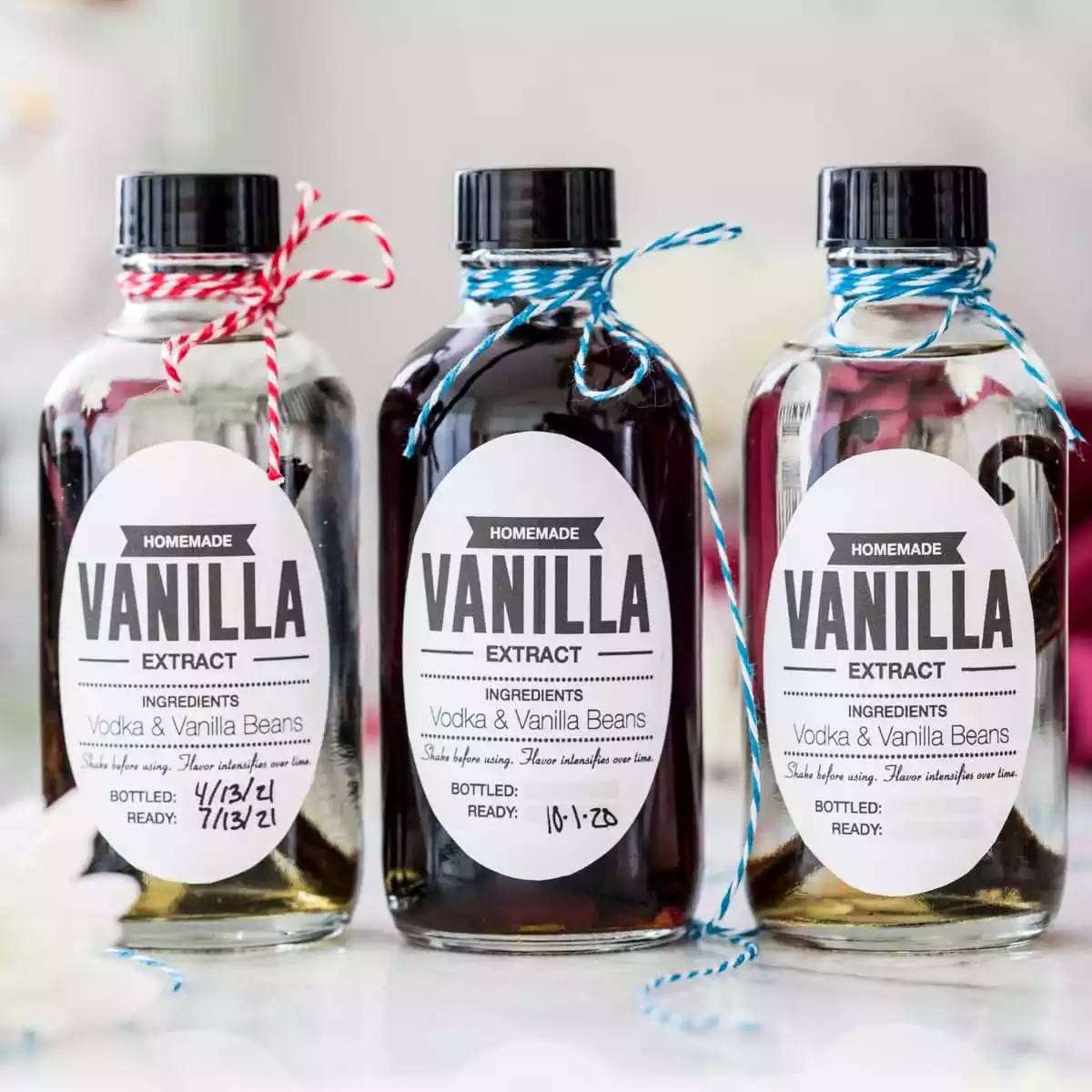
There are also alcohol-free versions available, as well as “imitation” vanilla extracts which replicate the flavor using synthetic compounds, though they lack the depth and complexity of genuine vanilla extract.
Types of Vanilla Extract
Vanilla extract comes in various types based on the source of vanilla, extraction process, and other characteristics. Here are some of the primary types:
- Pure Vanilla Extract: This is made from real vanilla beans and is the most common type used in baking and cooking. By definition in the U.S., pure vanilla extract must contain at least 35% alcohol and 100 grams of vanilla beans per liter.
- Imitation Vanilla Extract: Made from synthetic flavorings, often derived from lignin or guaiacol, it mimics the taste of vanilla but lacks the depth and richness of the real thing. It’s often cheaper and used in products where the fine nuances of pure vanilla won’t be noticeable.
- Bourbon or Madagascar Vanilla Extract: Originating from Madagascar and neighboring islands, this extract boasts the classic, rich vanilla flavor most people are familiar with.
- Tahitian Vanilla Extract: Derived from the Vanilla tahitensis species, it has a more floral, fruity profile compared to other vanilla extracts.
- Mexican Vanilla Extract: Made from beans grown in Mexico, this extract offers a bold, dark, and spicy flavor, reminiscent of the vanilla’s historical roots.
- Clear or White Vanilla Extract: A clear extract often used in recipes where color is crucial, like white frostings. It might be either pure (made with a clear alcohol) or imitation.
- Alcohol-Free Vanilla Extract: Ideal for those avoiding alcohol, this extract uses glycerin or another non-alcoholic solvent as its base.
- Double or Triple Strength Vanilla Extract: These are more concentrated extracts, which means less is needed to impart the desired vanilla flavor in recipes.
- Organic Vanilla Extract: Made from vanilla beans grown without the use of synthetic fertilizers, pesticides, or herbicides and extracted using organic-certified alcohol.
- Raw or Cold-Pressed Vanilla Extract: This type of extract is made without applying heat, believed by some to better preserve the delicate aromatics of the vanilla.
When buying vanilla extract, always read the label to ensure you’re getting the desired type. Pure vanilla extract generally offers a richer, more authentic flavor than its imitation counterparts.
Comparison Table of Vanilla and Vanilla Extract
Here’s a simple comparison table of vanilla (specifically vanilla beans) and vanilla extract:
| Feature | Vanilla (Vanilla Beans) | Vanilla Extract |
|---|---|---|
| Origin | Derived from the pods of vanilla orchids. | Made by macerating and steeping vanilla beans in a mixture of alcohol and water. |
| Form | Solid (long, thin pods). | Liquid. |
| Flavor and Aroma | Intense and full-bodied when scraped from the pod. | Concentrated and easily dispersible in recipes. |
| Usage | Can be split and scraped to use seeds; or infused in liquids. | Added directly to recipes in drops or teaspoons. |
| Shelf Life | Several months to a year when stored properly. | Can last for several years due to alcohol content. |
| Price | Generally more expensive per use due to labor-intensive production. | Often more cost-effective for frequent use. Can vary based on type (pure vs. imitation). |
| Storage | Cool, dark place in an airtight container. Avoid refrigeration. | Cool, dark place; doesn’t need refrigeration. |
| Content | Contains tiny seeds and a viscous substance inside. | Liquid, with no seeds or solid content. |
| Alcohol Content | None. | Typically contains 35% alcohol or more, though alcohol-free versions exist. |
| Applications | Infusions, direct incorporation into dishes, vanilla sugar. | Baking, cooking, desserts, beverages. |
This table provides a basic comparison between the two. The choice between vanilla beans and vanilla extract often depends on the specific application, personal preference, and budget.
Production Process of Vanilla and Vanilla Extract
The production of both vanilla and vanilla extract is a meticulous process that spans several stages.
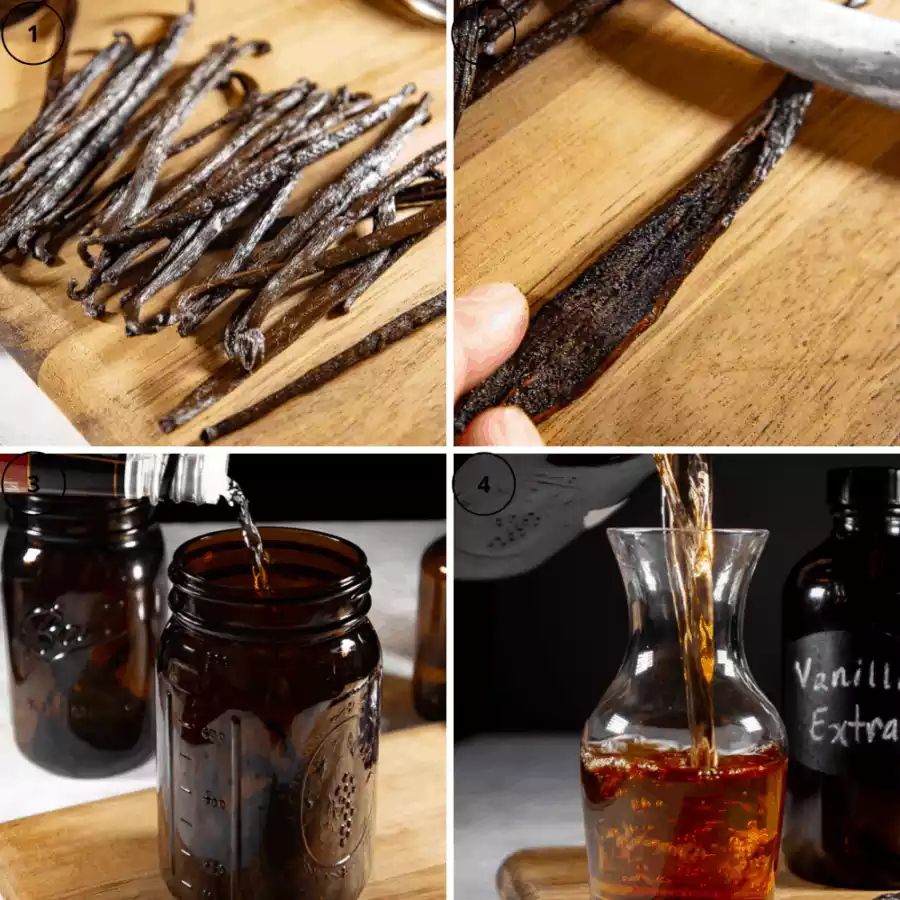
Here’s a comprehensive breakdown of both:
Vanilla Production
- Pollination: Most vanilla orchids outside of their native habitat in Mexico require hand-pollination. This labor-intensive task involves transferring pollen from one part of the flower to another using a small tool or even fingers.
- Harvesting: About eight to nine months after pollination, vanilla beans (or pods) are harvested. They are picked when they are still green and not yet aromatic.
- Curing: This is a critical phase where the beans develop their characteristic aroma and flavor. It involves several steps:
- Blanching: Beans are briefly immersed in boiling water.
- Sweating: Wrapped in cloth, the beans are stored in airtight containers for several days to ferment.
- Drying: The beans are spread in the sun during the day and stored indoors at night. This process can last for weeks, ensuring beans lose much of their moisture.
- Sorting and Aging: Once dried, beans are sorted based on quality and size, then stored for several months to further develop their flavors.
Vanilla Extract Production
- Selection and Preparation: Cured vanilla beans are chosen based on quality and then chopped to increase the surface area for extraction.
- Steeping: The chopped beans are submerged in a mixture of alcohol and water. The alcohol acts as a solvent, extracting the flavor compounds from the beans. This mixture is typically allowed to steep for several months.
- Filtering: After steeping, the liquid is filtered to remove any solid bean particles and other impurities.
- Maturation: Some producers let the filtered extract mature for an additional period, which can refine and intensify the flavor.
- Bottling: The finished vanilla extract is bottled and sealed, ready for distribution and sale.
The production of vanilla and its extract is time-consuming and labor-intensive, which often justifies the high cost of genuine vanilla products. However, the intricate process results in a flavor and aroma that’s cherished globally.
Benefits of Vanilla and Vanilla Extract
Vanilla and vanilla extract, apart from being highly valued for their delightful aroma and flavor in culinary applications, also possess various potential health benefits:
- Antioxidant Properties: Vanilla contains antioxidants, most notably vanillin. Antioxidants help combat free radicals in the body, which can contribute to cell damage and aging.
- Anti-inflammatory: Vanilla has been studied for its potential anti-inflammatory properties, which could help reduce inflammation in the body.
- Mood Enhancer: The scent of vanilla has been found to have mood-lifting properties. Some studies suggest that it might help alleviate symptoms of anxiety and depression.
- Aphrodisiac Qualities: Historically, vanilla has been considered an aphrodisiac, though scientific evidence on this is limited.
- Dental Health: The antibacterial properties of vanilla might help reduce the prevalence of bacteria in the mouth, potentially aiding in the prevention of tooth decay and bad breath.
- Wound Healing: Some traditional cultures have used vanilla as a remedy for wounds, though it’s not a common or primary choice for this purpose in modern times.
- Digestive Health: Vanilla has been used in traditional medicine to calm an upset stomach and alleviate digestive discomfort.
- B Vitamin Content: Vanilla beans contain small amounts of B-complex vitamins, including niacin, pantothenic acid, thiamin, riboflavin, and vitamin B6.
- Mineral Content: They also contain trace amounts of minerals like magnesium, potassium, calcium, and phosphorus.
- Skin Benefits: Some believe that vanilla can be beneficial for the skin, with potential anti-aging properties due to its antioxidants. It’s sometimes included in skincare products for its scent and potential skin benefits.
While moderate consumption of vanilla and its extract is generally safe and can offer these benefits, overconsumption, especially of vanilla extract (due to its alcohol content), can be harmful. Always consult with healthcare professionals regarding any potential therapeutic use.
Health Benefits
Vanilla and vanilla extract, while primarily used for their aromatic and flavoring qualities, have also been attributed with several potential health benefits:
- Antioxidant Properties: Vanilla contains various antioxidants, notably vanillin. Antioxidants help neutralize free radicals in the body, which can contribute to cell damage, aging, and various diseases.
- Anti-inflammatory Effects: Some studies suggest that vanilla has anti-inflammatory properties, which can help reduce inflammation in the body, potentially aiding in the relief of conditions like arthritis or other inflammatory ailments.
- Mood Improvement: The aroma of vanilla has been shown to have mood-enhancing effects. It may help alleviate symptoms of anxiety and depression in some individuals.
- Heart Health: There’s some evidence that vanilla might help reduce cholesterol levels, potentially supporting heart health.
- Dental Health: The antibacterial nature of vanilla might combat bacteria in the mouth, possibly aiding in the prevention of tooth decay and bad breath.
- Digestive Health: Historically, vanilla has been utilized as a remedy for stomach upsets and to alleviate digestive discomfort.
- Wound Healing: While not a primary or modern treatment, some traditional cultures have considered vanilla to possess wound-healing properties.
- Potential Anti-Carcinogenic Properties: Some studies (though preliminary and not yet conclusive) have explored the potential of vanillin (the main compound in vanilla) to inhibit the development and progression of cancer cells.
- Skin Health: Vanilla’s antioxidant properties might help protect the skin from damage by free radicals, leading to healthier skin appearance. It’s often found in various skincare products for both its potential benefits and pleasant scent.
- Aphrodisiac Qualities: Historically, vanilla has been considered to possess aphrodisiac properties, believed to enhance sexual desire. However, concrete scientific evidence in this area is limited.
While vanilla and its extract offer these potential benefits, they are not substitutes for medical treatments. Always consult healthcare professionals for advice on health concerns or before using vanilla or any other substance for therapeutic purposes.
Buying and Storing Vanilla and Vanilla Extract
Buying and storing vanilla and vanilla extract properly can ensure that you enjoy their rich flavors for as long as possible. Here are some tips for both:
Buying Vanilla:
- Beans: When purchasing vanilla beans, look for beans that are moist, pliable, and shiny. They should have a strong, sweet aroma. Avoid beans that appear overly dry, brittle, or shriveled.
- Quality: There are various grades, with Grade A (often referred to as “gourmet” or “prime”) being moist and plump, and Grade B (or “extraction grade”) being drier and less visually appealing. Grade A is excellent for direct culinary use, while Grade B is more commonly used to make homemade vanilla extract.
- Origin: Consider the bean’s origin. Madagascar/Bourbon, Tahitian, and Mexican vanilla beans are among the most popular, each with its unique flavor profile.
Storing Vanilla:
- Beans: Store vanilla beans in an airtight container or a vacuum-sealed bag. Keep them in a cool, dark place away from direct sunlight. Do not refrigerate or freeze, as this can cause the beans to become hard and crystallized.
- Life: Properly stored, good quality vanilla beans can last for several months to a year.
Buying Vanilla Extract:
- Labeling: Always read the label when purchasing. “Pure” vanilla extract is derived directly from vanilla beans, while “imitation” vanilla extract is synthesized from other sources and may not offer the same depth of flavor.
- Alcohol Content: Most pure vanilla extracts contain alcohol, which acts as a solvent and preservative. Check the alcohol content if it’s a concern for your recipes.
- Packaging: Opt for extracts in dark glass bottles, as they protect the contents from sunlight, which can degrade the flavor over time.
Storing Vanilla Extract:
- Location: Store vanilla extract in a cool, dark place. It doesn’t need to be refrigerated.
- Life: The high alcohol content in pure vanilla extract acts as a preservative, allowing it to have a long shelf life. When stored correctly, it can last for several years, though the flavor might diminish slightly over extended periods.
- Imitation Extracts: These usually have a shorter shelf life than pure extracts. Check labels for best-before dates.
By purchasing quality products and storing them under optimal conditions, you can ensure that the vanilla and vanilla extract retain their rich and aromatic flavors for your culinary creations.
Conclusion
Vanilla, derived from the pods of the vanilla orchid, is a cherished ingredient renowned for its captivating aroma and rich flavor. Its history traces back to ancient Mesoamerica, with its allure spreading globally over centuries. Beyond its culinary significance, vanilla offers potential health benefits, from antioxidant properties to mood-enhancing effects.
Vanilla extract, a liquid derivative, simplifies the incorporation of vanilla’s essence into a plethora of dishes. Both vanilla and its extract embody a fusion of culinary tradition, global appreciation, and therapeutic potential, making them indispensable in kitchens worldwide.

